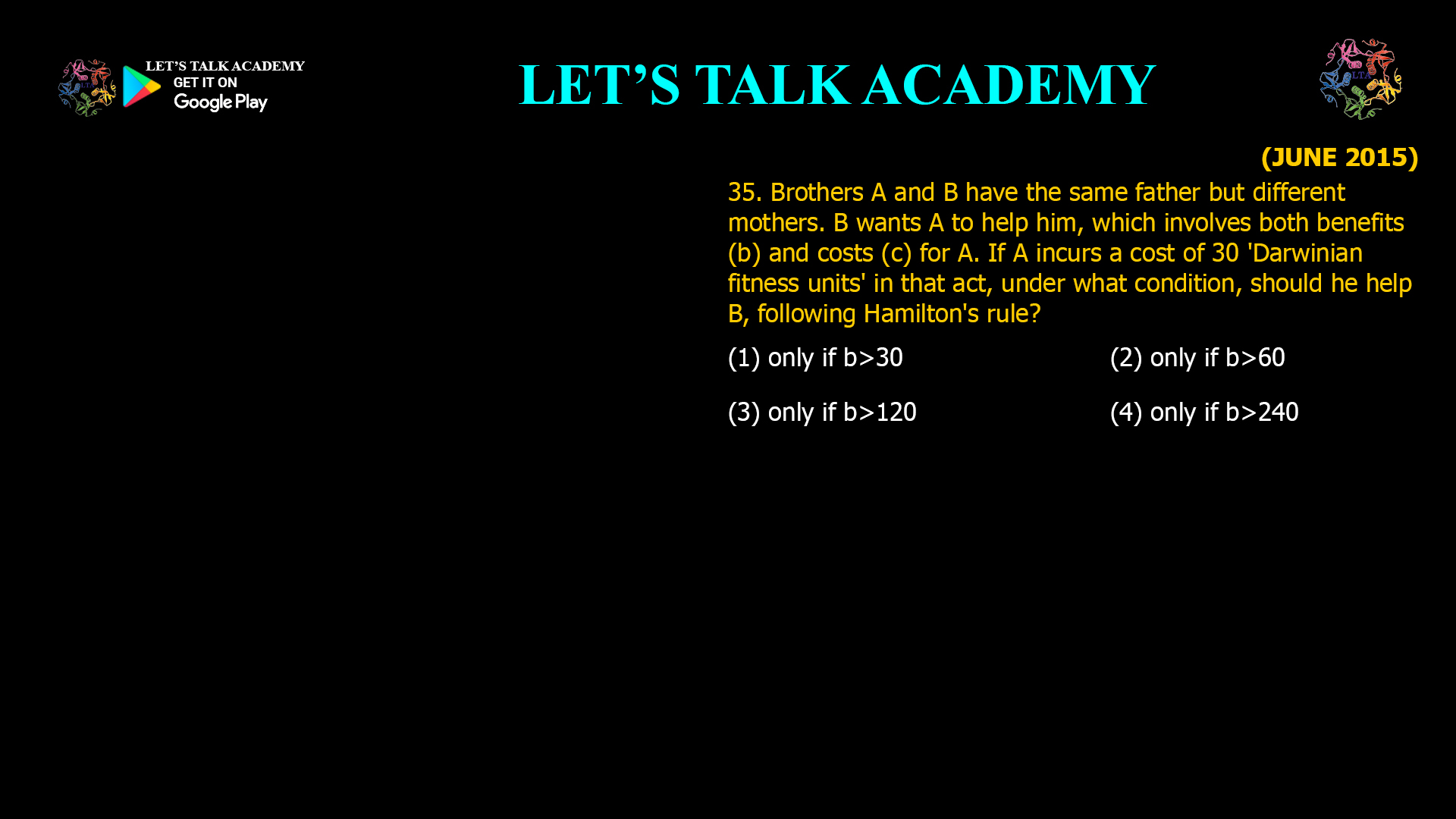- Brothers A and B have the same father but different mothers. B wants A to help him, which involves both benefits (b) and costs (c) for A. If A incurs a cost of 30 ‘Darwinian fitness units’ in that act, under what condition, should he help B, following Hamilton’s rule?
(1) only if b>30 (2) only if b>60
(3) only if b>120 (4) only if b>240Determining Relatedness: Half-Siblings
For full siblings, the coefficient of relatedness (r) is 0.5, since they share half their genes. However, half-siblings (brothers with the same father but different mothers) share only one parent, so their relatedness is:
r=0.5×0.5=0.25
This is supported by standard kinship calculations and evolutionary biology resources.
Applying Hamilton’s Rule
Given:
-
Cost to A (C): 30 fitness units
-
Relatedness (r): 0.25 (for half-siblings)
-
Benefit to B (b): unknown; we want to find the threshold
Hamilton’s rule predicts A should help B if:
r×b>C0.25×b>30b>300.25b>120
Conclusion
According to Hamilton’s rule, A should help B only if the benefit to B exceeds 120 fitness units. This ensures that the act of altruism is favored by natural selection given their genetic relationship as half-siblings.
Correct answer: (3) only if b > 120.
-




1 Comment
Kajal
October 15, 2025Option 3